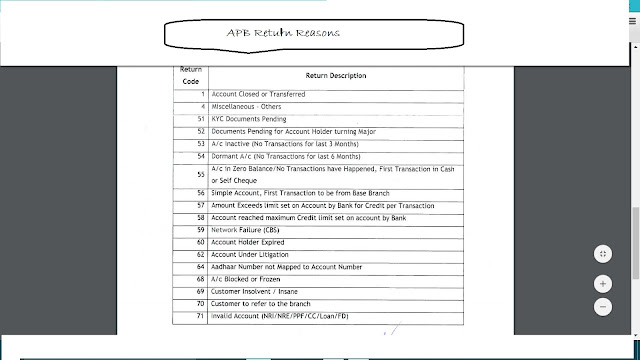SEBI turns its spotlight on of AI (Artificial Intelligence) and ML (Machine Learning)
The
increasing deployment of AI and ML in the Mutual Funds market has prompted to turn
the spot light on AI and ML.
SEBI through Circular No SEBI/HO/IMD/DF5/CIR/P/2019/63
May 09, 2019 addressed to:
- ·
All Mutual Funds (MFs) /
- ·
Asset Management companies (AMCs) /
- ·
Trustee Companies / Board of Trustees of Mutual
Funds /
- ·
Association of Mutual Funds in India (AMFI)
Is introducing a Reporting Mechanism
for for Artificial Intelligence (AI) and Machine Learning (ML) applications and systems offered
and used by Mutual Funds
Background
SEBI has
noticed that there is increasing usage of AI (Artificial Intelligence) and ML
(Machine Learning) as product offerings by
market intermediaries and participants (e.g.: “robo advisors”) in investor and
consumer facing products.
To have a
fair picture of the deployment of AI and ML in mutual funds, SEBI is conducting a survey.
The objective of the
survey is to create an inventory of the
AI / ML landscape in the Indian financial markets to gain an
in-depth understanding of the adoption of such technologies in the markets and
to ensure preparedness for any AI / ML policies that may arise in the future.
As most AI / ML systems are black boxes and
their behavior cannot be easily quantified,
SEBI believes that it is imperative to ensure that any advertised financial
benefit owing to these technologies in investor facing financial products
offered by intermediaries should not constitute to misrepresentation.
Scope
definition
Any set
of applications / software / programs / executable / systems (computer
systems) – cumulatively called
application and systems,
a. that are offered to investors
(individuals and institutions) or used internally by Mutual Funds to facilitate
investing and trading or for any other purpose,
OR
b. to disseminate investments
strategies and advice,
OR
c. to carry out compliance /
operations / activities, where AI / ML is portrayed as a part of the public
product offering or under usage for compliance or management purposes, is
included in the scope of this circular.
Here, “AI” / “ML” refers to the
terms “Artificial Intelligence” and “Machine Learning” used as a part of the
product offerings. In order to make the scope of this circular inclusive of
various AI and ML technologies in use, the scope also covers Fin-Tech and
Reg-Tech initiatives undertaken by market participants that involves AI and
ML.
Technologies
that are considered to be categorized as AI and ML technologies in the scope of
this circular, are explained in detailed Annexure B.
Regulatory
requirements
SEBI has mandated that all registered Mutual Funds offering or using
applications or systems as defined in Annexure B, should participate in the
reporting process by completing the AI / ML reporting form
The start
date is t from quarter ending June 2019, registered Mutual Funds using AI / ML
based application or system as defined in Annexure B, are required to fill in
the form (Annexure A) and make submissions on quarterly basis within 15 calendar
days of the expiry of the quarter to AMFI.
SEBI in
turn has to consolidate the information on AI / ML applications and systems reported
by Mutual Funds on quarterly basis and submit to SEBI.
Annexure B – Systems deemed to be
based on AI and ML technology Applications and Systems belonging but not
limited to following categories or a combination of these:
1. Natural Language Processing
(NLP), sentiment analysis or text mining systems that gather intelligence from
unstructured data. – In this case, Voice to text, text to intelligence systems
in any natural language will be considered in scope. E.g.: robo chat bots, big
data intelligence gathering systems.
2. Neural Networks or a modified
form of it. – In this case, any systems that uses a number of nodes (physical
or software simulated nodes) mimicking natural neural networks of any scale, so
as to carry out learning from previous firing of the nodes will be considered
in scope. E.g.: Recurrent Neural networks and Deep learning
3. Neural Networks - Machine learning through supervised,
unsupervised learning or a combination of both. – In this case, any application
or systems that carry out knowledge representation to form a knowledge base of
domain, by learning and creating its outputs with real world input data and
deciding future outputs based upon the knowledge base. E.g.: System based on
Decision tree, random forest, K mean, Markov decision process, Gradient
boosting Algorithms.
4. A system that uses statistical
heuristics method instead of procedural algorithms or the system / application
applies clustering or categorization algorithms to categorize data without a
predefined set of categories.
5. A system that uses a feedback
mechanism to improve its parameters and bases it subsequent execution steps on
these parameters.
6. A system that does knowledge
representation and maintains a knowledge base.
Additional Reading Material:
Click on the blue link




In AI, the game theory is widely used to enable some of the key capabilities required in the multi-agent environment, in which multiple agents try to interact with each other to achieve a goal.
ReplyDeletehttp://todayssimpleaiformarketing.com/